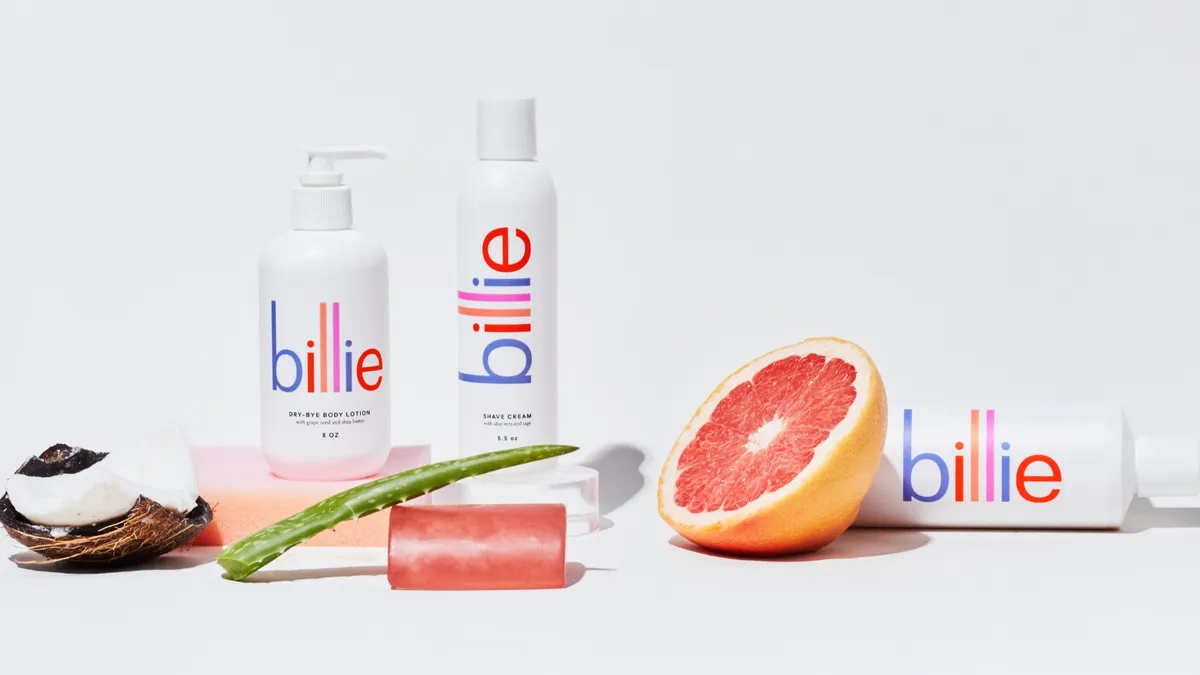For a while last year, after a series of style misses that left it buried in $4 billion dollars of excess inventory and with a late start in e-commerce that made it that much harder to unload, things seemed dire for H&M. At first the company seemed more preoccupied with launching new brands and opening stores, if at a slower pace than first announced, than working through the issues at its flagship.
That's changed, and, while its shift to e-commerce and other moves are taking a bite out of profits, the apparel company is getting more serious about its digital operations and scaling back its footprint, with plans to shutter some 160 stores this year, with an "option to renegotiate almost 1,000 store contracts," the company said in its full-year report presentation.
But a series of smaller initiatives suggests that H&M hasn't been too distracted with its turnaround to take the pulse of Generation Z — a cohort whose oldest members are in their 20s and so entering the workforce, but who are already spending $3.4 trillion and accounting for over 7% of total household spend, according to research from OC&C Strategy Consultants emailed to Retail Dive. The fast-fashion company, known best for its focus on swiftly knocking off trends from the runway and selling them off at basement prices for maximum turnover, is now testing sales of second-hand clothing and an online fashion advice forum, Itsapark, billed as "a space where people can get honest answers to all their fashion questions" from live people.
"Having underinvested in online previously, H&M is playing catch up but is making up for it now with numerous initiatives, and will roll out click & collect and instore returns to more markets this year," Kate Ormrod, lead retail analyst at GlobalData Retail, said in comments emailed to Retail Dive. "Users in the US can now buy H&M products directly on Instagram without leaving the app. Being part of this trial signals H&M's intentions to become more innovative online, much needed to compete with online pureplays."
The company's turnaround showed traction in its most recent quarter, when net sales rose 12% (or 6% in local currency) to SEK 56.4 billion ($50.4 billion) as online sales rose 24%. The cost of markdowns declined by 0.6 percentage points, but quarterly profit after financial items fell 11% to SEK 4.35 billion, as the development of new warehousing for online fulfillment took a SEK 560 million toll, the company said.
The initiatives
As its sales numbers demonstrate, H&M is a massive apparel company; net sales reached $200 billion last year. But a few moves show some nimbleness. The retailer has released its "Conscious Collection" each spring since 2010, for example, with new announcements each year. This season, unveiled April 11, the apparel is made with recycled polyester, organic cotton, organic linen, organic silk, TENCEL lyocell (made from sustainably produced wood pulp), recycled plastic, recycled glass and recycled silver, Piñatex (vegan leather made from pineapple leaves), BLOOM Foam (foam made from algae) and Orange Fiber (made from citrus by-products).
Those efforts, while notable for a fast-fashion retailer, may ultimately need an upgrade or expansion to satisfy Gen Z, however, whose members are well informed and concerned about the environment (although they're even more concerned about equality and diversity among people), according to OC&C Strategy Consultants. That study found that 15% said they're dedicated to "reducing amount of waste I create," 14% to "reducing my carbon footprint" and 13% to "reducing use of single-use plastic." At some point, though, sustainability might need to be found beyond a special collection.
"What H&M is doing — they have a huge sustainable attribute," Jordan Nodarse, a fashion designer and founder of Boyish jeans who uses sustainable materials throughout his supply chain, told Retail Dive in an interview. "If you set apart the sustainable part of H&M, they would probably be the biggest sustainable apparel company in the world. But that is them saying 'we're doing really nice things.' Using recycled polyester … it's a laughingstock — these petroleum-based fibers are mircro-shedding — That's why the coral reefs are dying, the fish are dying and we're eating the fish."
Even more than its Conscious Collection, though, H&M's test of used clothing sales seems particularly anathema to the fast-fashion business model. But the company has invested in Swedish second-hand apparel sales site Sellpy since 2016, according to Pitchbook. And on Monday H&M said it is testing a separate landing page there for its & Other Stories brand.
Although the test remains in Sweden for now, the move positions H&M to take advantage of the surge in used apparel sales. But it's also a meaningful way to make apparel sales more sustainable, ethical fashion stylist Kat Eves told Retail Dive in an email.
Finally, H&M's new fashion forum, Itsapark, (now in beta), where users post questions and get matched with an advisor, could also resonate with Gen Z. "By building online communities, brands and retailers can access and influence these users," according to OC&C Strategy's report. "The purpose of these communities is not to directly sell products, but to create spaces and opportunities for consumer communities to engage, interact, share knowledge, review products and ultimately grow in their brand advocacy. Clearly, these spaces must be useful, enriching or entertaining for consumers to continue to engage with them."




















